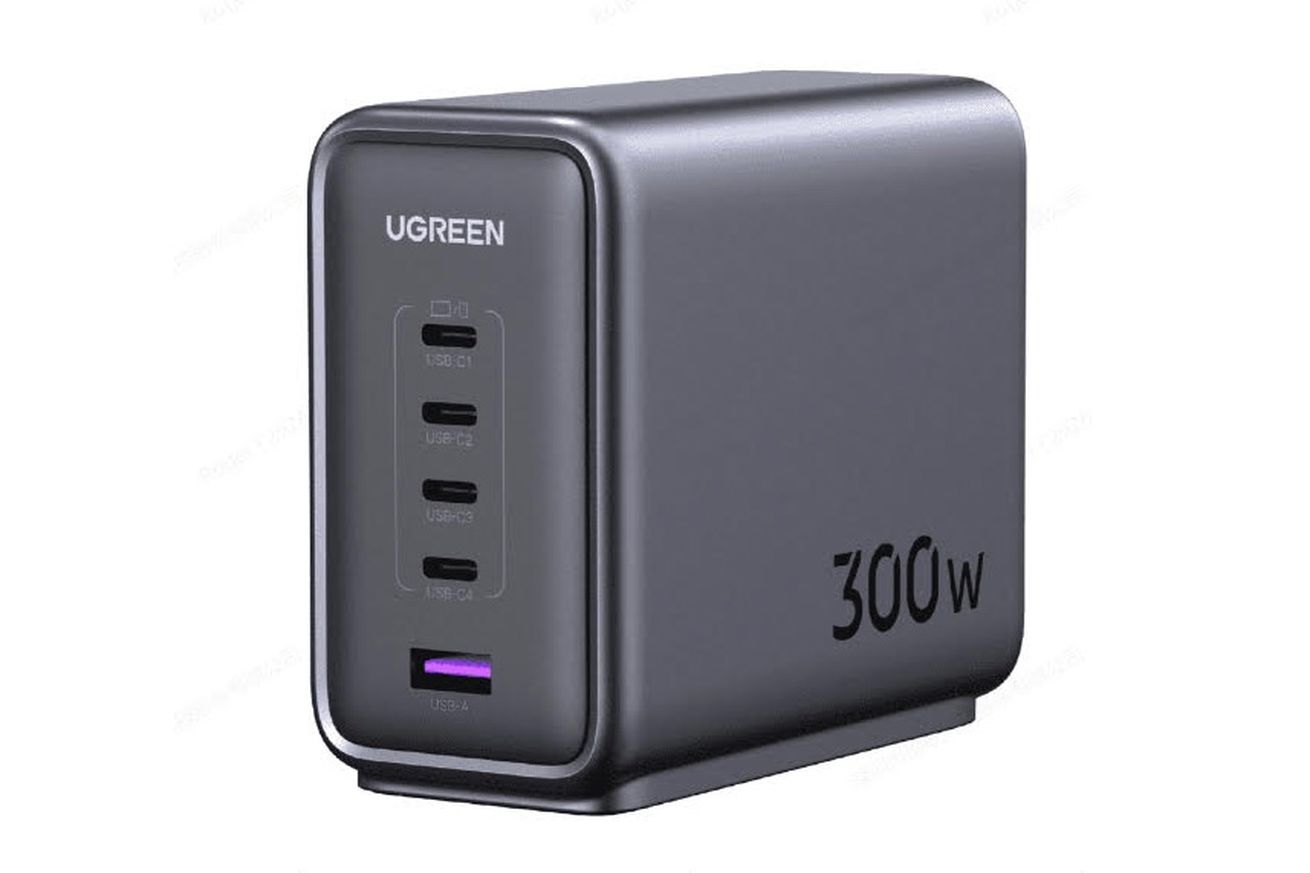
From earbuds and smart displays to robot vacuums and phones, here’s the best of what Prime Day has to offer on tech and gadgets.
anPrime Day is upon us once again. It’s Amazon’s big, pretend holiday drummed up to generate sales during the slow season, and it brings with it a bevy of deals and discounts on a massive range of tech and gadgets. We’re here to help you sort through all that Prime Day has to offer, separating the wheat from the chaff and helping you not just save money but also spend it wisely (well, as wisely as a borderline-superfluous tech purchase can be).
While Prime Day may be designed to sell Prime memberships, its ripple effects mean there are many equivalent deals at other retailers available to all. Many are just the discounts you can generally find on wireless earbuds, tablets, e-readers, etc. But there’s always a chance of some new, all-time low prices that you might not otherwise see outside of Black Friday times.
We’re on the lookout for it all on your behalf through the curated tastes, watchful eyes, and slightly deranged minds that only The Verge offers. So be sure to check back frequently as we continue tracking, adding, and updating deals through Prime Day — both today and tomorrow because Amazon doesn’t understand pluralization.
The best Amazon Prime Day deals on headphones and earbuds
- Amazon’s Echo Buds with Active Noise Cancellation are on sale with a wired charging case for just $64.99 ($55 off) or with a wireless charging case for $84.99 ($55 off). The second-gen wireless earbuds offer a good amount of value for the money, with a comfortable fit, good ANC, and support for hands-free Alexa commands. Read our review.
- The Bose QuietComfort Earbuds II, which offer the best noise cancellation you can get in a pair of wireless earbuds right now, are on sale at Amazon for $249 ($50 off). They sadly lack wireless charging, but they remain a dependable set of earbuds with a terrific transparency mode that’s designed to keep you aware of your surroundings. Read our review.
- Jabra’s Elite 4 Active are down to $69.99 ($50 off) at Amazon. The durable, gym-friendly pair of wireless earbuds feature a bevy of solid features for the price, including good sound, active noise cancellation, a waterproof design, and what has become a welcome hallmark of most Jabra earbuds in recent years: multipoint Bluetooth support.
- If you’re not a fan of wireless earbuds, Sennheiser’s ultra-comfy IE 200 are matching their all-time low of $99.95 ($50 off) on Amazon right now. Not only do the in-ear monitors offer clean, detailed sound, but they come with a detachable braided cable and six sets of ear tips. Read our review.
- Sony’s last-gen WH-1000XM4 noise-canceling headphones are on sale for $248 at Amazon for Prime members or $249.99 at Best Buy for anyone. They may not have the newer design or improved mics of the XM5s, but they’re still a great pair of cans, and they actually fold down for smaller storage and easier travel.
- Bose’s QuietComfort 45 are on sale at Amazon for $199 ($130 off) in white and blue or $229 ($100 off) in black or gray. They offer terrific active noise cancellation and a useful transparency mode; however, it’s their best-in-class comfort that really cements them as some of the best headphones you can buy. Read our review.
- The Sony Linkbuds — arguably the company’s strangest pair of earbuds in years — are on sale at Amazon right now for just $128 ($52 off), matching their best price to date. The unique earbuds don an open-style design, yet they’re surprisingly comfortable and offer top-notch voice call quality in addition to solid sound. Read our review.
- Amazon is dropping Google’s premium Pixel Buds Pro to $132.99 ($67 off) in gray and lemongrass (the best color) or $138.99 ($61 off) in coral or black. The well-rounded wireless earbuds are the best pair you can get if you’re a Google Pixel owner, owing to their impressive sound quality, great battery life, and a number of Pixel-exclusive conveniences. Read our review.
The best Amazon Prime Day deals on smart speakers and smart displays
- The jumbo-size Echo Studio is on sale with a Sengled smart bulb for $154.99 (about $60 off). The Studio may do most of what an Echo Dot does — execute voice commands, tell you the weather, play music, etc. — but it gets loud enough to really fill a room with sound.
- Amazon’s latest Echo Show 5 is selling for $44.99 ($45 off). We haven’t reviewed it yet, but the new model boasts improved sound over its predecessor. The Show 5 has been a mainstay choice for an Alexa-infused display in a small space or at your bedside.
- The rotating Echo Show 10 with a Ring smart bulb is $162.99 (about $102 off). Yes, Ring makes bulbs, too, and the Show 10 is a nifty display if you like to move around while on a video call or cooking a recipe you’re viewing on its movable screen.
- The Echo Show 15 with an included remote is $181.98 ($98 off). It’s the largest Echo smart display and the only one that’s wall-mountable. It’s also the only model that doubles as a Fire TV streaming device for more versatile content consumption.
The best Amazon Prime Day deals on TVs and streaming devices
- The Alexa Voice Remote Pro is down to an all-time low of $27.99 ($7 off). It takes largely after the default clicker that comes bundled with Fire TV devices (surprise, surprise), though it introduces backlighting, customizable buttons, and a handy feature that allows you to ping the remote when you inevitably lose it. Read our review.
- The Fire TV Stick 4K Max is one of the best streaming devices you can buy, and it’s on sale at Amazon for $24.99 ($20 off). Amazon’s streamers are a little heavy on promoting its own shows and content, but the 4K Max has excellent voice controls with Alexa.
- Hisense’s 65-inch U8H Mini LED TV is now $899.99 (about $150 off) at Amazon. The U8H offers a lot of bang for the buck with its bright and contrast-rich Mini LED panel, with Google TV software onboard to handle the streaming duties.
- Vizio’s Elevate soundbar with a 5.1.4 audio setup and rotating, up-firing speakers is on sale for a new low of $590.99 (about $395 off) at Amazon. The high-end speaker — which comes with a dedicated subwoofer and two satellite speakers — offers a more immersive surround sound experience than soundbars with just virtual Dolby Atmos, not to mention support for both Google Cast and Bluetooth.
The best Prime Day deals on phones
- You can pick up an unlocked Google Pixel 6A at Amazon right now for just $249 ($100 off), which is nearly its best price to date. The last-gen Android phone is a bit of a step down from Google’s newer 7A since it lacks some newer specs — including a 90Hz display and wireless charging — but it’s still the best phone you can get for under $400 thanks to its excellent performance and battery life. Read our review.
- Samsung’s Galaxy A54 5G is on sale for Prime members right now for $349.99 ($100 off). It’s equipped with an exceptional screen for a midrange Android phone, not to mention an IP67 rating, a strong support policy, and dependable performance, making it a good pick as long as you’re okay with middling camera performance. Read our review.
- Google’s Pixel 7 and Pixel 7 Pro are on sale at Amazon for $499 ($100 off) and $649 ($250 off), respectively. Both of them are exceptional phones for anyone who likes Google’s colorful and customizable software design for Android, with the 7 Pro offering an extra-large display, a telephoto camera, and a bigger battery. Read our review.
- Motorola’s unlocked Moto G Stylus is down to just $139.99 ($160 off) at Amazon, exclusively for Prime subscribers. It may not have a very good camera or the best screen, but the massive 6.8-incher sports a built-in stylus and exceptional battery life for a very, very low price. Read our review.
- The Samsung Galaxy S23 is on sale at Amazon right now with 256GB of storage for $659.99 ($200 off). That’s quite a low price for Samsung’s latest 6.1-inch model, which is not overly big like its Plus and Ultra counterparts but still offers four years of promised OS updates. Read our review.
- If you want the best slab phone Samsung has to offer, Amazon is selling an unlocked Galaxy S23 Ultra for $949.99 ($250 off). The S23 Ultra may fake some photos of the moon, but it’s an impressive flagship with pretty much every top-of-the-line feature crammed into its large 6.8-inch frame. Read our review.
- Nomad is running a site-wide 30 percent off sale on its standard edition, in-stock smartphone and wearable accessories — including its Apple Watch straps and MagSafe chargers.
The best Prime Day deals on laptops and computing accessories
- Logitech’s StreamCam is now $129.99 ($40 off) at Amazon. It’s a fine 1080p webcam for everything from videoconferencing to Twitch streaming, even if its USB-C cable being permanently attached is slightly annoying. Read our webcam buying guide.
- The Elgato Facecam is on sale for $119.99 ($30 off) at Amazon, which is a new low. The 1080p-capable Facecam is a little on the jumbo size for webcams, but it has a great selection of adjustable software controls and features an ultrawide 82 degree field of view.
- The Samsung M8 Smart Monitor combines a computer monitor and smart TV into a single 32-inch package, making it great for people who consume content on the same machine that they get their work done on. It’s currently $379.99 (about $117 off) at Amazon for Prime members. Read our review.
- Elgato’s excellent Stream Deck MK.2, which features 15 LCD macro keys and swappable front cosmetic faceplates, is on sale for $109.99 ($40 off) in white or $114.99 ($35 off) in black at Amazon. There are many Stream Deck owners here at The Verge, namely because it’s as great for desktop power users as it is for streaming.
The best Amazon Prime Day deals on smart home tech
- The Kasa Smart Plug Mini is available in a two-pack for $12.99 ($7 off), a three-pack for $17.49 ($7.50 off), or a four-pack for $20.99 ($9 off). Apple Home users also have a compatible option on sale in a four-pack for $34.99 ($15 off). All four of these deals are exclusive to Prime members, and any of them can bring smart functionality, including scheduled timers, to your basic outlet.
- The Evovacs Deebot X1 Omni is on sale at Amazon for $854.99 ($695 off), which is the best price to date. The stylish robot vacuum/mop hybrid is still pricey at nearly $900, though it’s loaded with plenty of bells and whistles, including AI obstacle avoidance, an effective self-cleaning function, and the ability to moonlight as a security camera with two-way audio. Read our review.
- The iRobot Roomba j7, our top pick when it comes to robot vacuums, is available in three versions for some of its best pricing to date. Right now, you can get the obstacle-avoiding, auto-mapping bot as a standalone vacuum for $399 ($200 off), with an auto-emptying station for $649 ($150 off), or as a Combo model with a built-in mop for $799 ($300 off).
- Google’s Nest Thermostat may be a little basic when it comes to features, but it’s currently on sale for just $84.99 ($45 off) at Amazon, making it a little easier to forgive its simpler setup. It’s fine for controlling your home HVAC from your phone, but it doesn’t adapt to your behavior like Google’s fancier Learning Thermostat. Read our review.
- The Chamberlain myQ Smart Garage Door Opener can ensure you always remember to close your garage door when leaving the house, even from afar, and it’s on sale for just $19.99 ($10 off) at Amazon.
- The Arlo Essential Video Doorbell Wired is down to just $49 ($100 off) at Amazon. That’s quite a low price for a quality, platform-agnostic doorbell, though keep in mind that Apple Home users need a $100 hub to integrate it.
The best Amazon Prime Day deals on tablets and e-readers
- The new entry-level iPad — aka the 10th-gen model from last year — is down to an all-time low of $379 ($70 off) in the 64GB / Wi-Fi configuration at Amazon. The 10.9-inch tablet is somewhat of an odd duck in Apple’s current lineup given its typical price and confusing ecosystem of accessories, but it still offers USB-C charging, plenty of optimized apps, and zippy performance courtesy of Apple’s A14 Bionic chip. Read our review.
- If you prefer a smaller Apple tablet, the redesigned iPad Mini from 2021 is also on sale at Amazon, where you can pick it up in its base configuration starting at $379.99 ($120 off). Like the newer entry-level model, the latest Mini offers a great screen and USB-C, though in a more diminutive form factor that’s capped at 8.3 inches. Read our review.
- The Kindle Scribe, Amazon’s biggest Kindle, is on sale starting at $254.99 ($85 off) for Prime members, which is one of the e-reader’s better prices to date. Admittedly, it’s still a little lackluster when it comes to note-taking despite recent software updates, but it still offers a large 10.2-inch E Ink display, great battery life, and a handy pen. Read our review.
- Amazon’s latest Kindle Paperwhite is on sale at Amazon with ads starting at $89.99 ($50 off), which is the lowest price to date on what we consider to be the best e-reader for most people. It’s got a great combo of features for the price, including months-long battery life, USB-C support, and a crisp, 6.8-inch display that’s a joy to read on. Read our review.
- If Amazon’s Fire HD 10 tablet isn’t budget enough for you, the newest Amazon Fire HD 8 is also on sale at Amazon with ads right now starting at just $54.99 ($45 off). The latest model is faster than its predecessor but is otherwise pretty much the same, which means it’s still a good option for kids or anyone who wants a basic slate for consuming Amazon content and other media. Read our Fire HD 8 Plus review.
The best Amazon Prime Day deals on smartwatches and fitness trackers
- Apple’s second-gen Watch SE can be had for as low as $199 ($50 off) on Amazon. The latest SE is still plenty fast despite being considerably cheaper than the Series 8, and it still can leverage most features of watchOS 9. Sure, it doesn’t have an always-on display or some of the more advanced sensors found on the more premium models, but you’d be hard-pressed to find a better entry-level smartwatch for the price. Read our review.
- The lightweight Fitbit Charge 5, one of our favorite Fitbit trackers, is on sale at Amazon for $99.95 ($50 off), matching its lowest price yet. It’s a nice bit of hardware overall, with long battery life, a bright OLED screen, and the ability to handle all the usual heart rate and activity tracking you’d expect in a capable fitness band. Read our review.
- Amazfit’s GTR 4 is on sale for $30 off at Amazon, dropping the price to a cool $169.99. The platform-agnostic smartwatch is a solid Fitbit alternative if you’re looking to get the most bang for your buck, especially since the Alexa-enabled wearable packs an OLED display, blood oxygen monitoring, stress tracking, and a whole bunch of features typically reserved for more premium wearables. Read our review.
- Amazfit’s Band 7 is now just $39.99 ($10 off) at Amazon. If you just need a simple fitness tracker but you’re on a tight budget, the Band 7 packs a lot of features, including heart rate tracking, blood oxygen monitoring, cycle tracking, sleep tracking, and a battery that lasts up to two weeks with the always-on display turned on. Read our review.
- The unique Aura Strap 2 body composition monitor for 41mmApple Watches is $119 ($30 off) at Amazon. The replacement strap has sensors of its own for bioelectric impedance analysis (BIA) to detect your body fat percentage, muscle mass, and even water level to give you a more well-rounded measure of your health and fitness — though some of its extras require a subscription. Read our review.
The best Amazon Prime Day Bluetooth speaker deals
- The tried-and-true JBL Charge 5 is on sale at Amazon for $119.95, which is $60 off and just $10 shy of its best price to date. The powerful Bluetooth speaker is a good pick if you’re looking for a waterproof option with good sound and marathon battery life, especially since it can also charge your phone in a pinch thanks to a built-in USB-A port.
The best Amazon Prime Day deals on games and gaming accessories
- Sony’s InZone H3 Wired Gaming Headset for the PlayStation 5 and PC is now just $58 ($40 off) at Amazon. These are the most budget-minded of Sony’s InZone headset trio, and while it’s not wireless like the H7 and H9, it’s got a similar build quality with soft, comfy ear pads and a boom mic that auto-mutes when you lift it up and away from your mouth.
- The HyperX QuadCast condenser mic for PC, PlayStation, and Mac is selling for $89.99 ($50 off) at Amazon. The bold, red-colored mic has four selectable pickup patterns, an internal pop filter for taming plosives, and a headphone jack for self-monitoring.
- Microsoft’s standard Xbox Wireless Controller is on sale starting at $46.99 ($13 off) at Amazon. The stock controller of the Xbox Series X / S is great for anyone gaming on Xbox or PC, though if you’re not a fan of its AA batteries, you can also get the Remix Special Edition Xbox controller in a unique Earth-themed green colorway with a rechargeable battery pack for $71.99 (also $13 off).
- Octopath Traveler II for the Nintendo Switch and PlayStation 4 / 5 is selling for $39.99 ($20 off) at Amazon. The old-school, tactical RPG has some lovely sprite graphics with an engrossing, detailed story.
- The Logitech G Fits wireless earbuds are down to $159.99 ( $70 off) at Amazon, matching their all-time low. Like the UE Fits, the G Fits custom-mold to your ears for a personalized fit, and they feature a low latency mode for gaming.
The best Amazon Prime Day deals on charging accessories
- Anker’s 715 USB-C Charger is currently on sale at Amazon for $33.99 ($16 off). Like other Anker chargers, the 65W offering uses GaN tech to squeeze more power from its compact package, allowing you to quickly charge everything from your phone to a 13-inch MacBook.
- If you’re working with Apple’s latest MacBook Air — or really any laptop with a limited port selection — you can grab Anker’s 341 USB-C Hub on Amazon for just $25.69 (about $9 off). In exchange for a single USB-C port, the expansive hub outfits you with two USB-C and USB-A ports, as well as both an SD card reader and an HDMI output.
- Google’s latest Pixel Stand is available for $59 ($20 off) at Amazon for Prime members. The second-gen Qi charger works best when paired with newer Pixel models, which are able to take advantage of speedy wireless charging speeds and a few more unique features — including the ability to act as an impromptu photo frame when docked. Read our review.
The best Amazon Prime Day deals on Verge favorites and other miscellaneous tech
- The Aeropress Original is currently selling for $29.16 (about $10 off) for Prime members. The portable, single-cup coffee maker can make standard coffee or espresso and is great for home use, travel, or camping.
- If you’re someone who’s prone to aches and pains — and who isn’t, honestly? — the latest Theragun Mini is on sale at Amazon for $169 ($30 off). The handheld massage gun puts out a surprising amount of power for its pocketable size, though, thankfully, you can always ratchet it down if you find the higher speeds to be too intense.
- The 2022 Tile Mate is back down to $17.99 ($7 off) on Amazon. Tile’s OG Bluetooth tracker is still quite handy despite the arrival of Apple’s AirTags and other tracking solutions, especially since it lets you keep tabs on your keys, a bag, and other items from up to 250 feet away regardless of whether you’re using Android or iOS.
- Of all the ships in recent Star Wars history, none of them are quite as iconic as Din Djarin’s ship from the first season of The Mandalorian. And right now, the Lego Razor Crest is on sale at Amazon for $97.99 ($42 off), which matches the 6,187-piece kit’s best price to date.
- The Joseph Joseph Garlic Rocker seems like just a simple curved piece of metal with holes in it, but it’s one of the easiest and most effective ways to mince garlic. It’s on sale at Amazon for $19.99 ($4 off).
- LifeStraw’s newer Peak Series Straw is available to Prime subscribers right now for $17.46 (about $7 off). The latest model features an improved flow rate and a more rugged design than the original model, but like previous iterations, it can still filter out bacteria and other potentially hazardous materials from any water source you encounter.
- The PetCube Bites 2 Lite, a notable alternative to Furbo’s aforementioned offering, is on sale at Amazon for $79.96 (about $69 off). It’s got a lot of the same features — including a 1080p camera, two-way audio, and a built-in treat dispenser — but it offers a wider field of view and better digital zoom. The tradeoff, however, is that it doesn’t swivel.
- The retro-inspired Polaroid Now Plus is down to $99.99 ($50 off) at Amazon for Prime Day, which is a mere $3 shy of its all-time low. As mentioned in our guide to the best instant cameras, the Now Plus is tailored toward those who are a fan of the old-fashioned, instant-film experience, one that takes a heavy cue from the classic Polaroid 600 of yesteryear.
- If you want a more sustainable method for stowing food, you can grab one of Stasher’s reusable sandwich bags on sale at Amazon starting at $9.09 (about $4 off). The silicone pouches are great for meal prep or taking your lunch to go; plus, unlike your standard Ziploc, Stasher’s durable bags come in an array of vibrant colors.
- If you’re a huge nerd for the iconic (or infamous, if you prefer) brown-and-tan color scheme of Noctua PC fans and coolers, you can get it in an MT3 keycap set for Cherry-compatible mechanical keyboards for a nice $69 ($61 off) at Drop.
- Speaking of keyboards, Keychron is offering a 20 percent off sale on its site and on Amazon, which includes many of its pre-built and barebones mechanical keyboards as well as colorful keycap sets. Keychron’s Q Pro line is sadly excluded from the deal, but many other excellent boards, like the Q1, are discounted (it’s now $143.20 or $151.20 with a handy knob).





/cdn.vox-cdn.com/uploads/chorus_asset/file/24779490/unnamed__1_.jpg) Image: Ugreen
Image: Ugreen

/cdn.vox-cdn.com/uploads/chorus_asset/file/24259049/226433_Rad_Trike_AHawkins_0005.jpg) Photo by Andrew Hawkins / The Verge
Photo by Andrew Hawkins / The Verge
/cdn.vox-cdn.com/uploads/chorus_asset/file/24775904/605791396.jpg) Image: Getty
Image: Getty
/cdn.vox-cdn.com/uploads/chorus_asset/file/18936844/akrales_190801_3511_0092.jpg) Photo by Amelia Holowaty Krales / The Verge
Photo by Amelia Holowaty Krales / The Verge






/cdn.vox-cdn.com/uploads/chorus_asset/file/24775623/01_android.jpg)
/cdn.vox-cdn.com/uploads/chorus_asset/file/24775624/02a_steam.jpg)
/cdn.vox-cdn.com/uploads/chorus_asset/file/24775627/02b_steam.jpg)
/cdn.vox-cdn.com/uploads/chorus_asset/file/24775630/03_luna.jpg)



